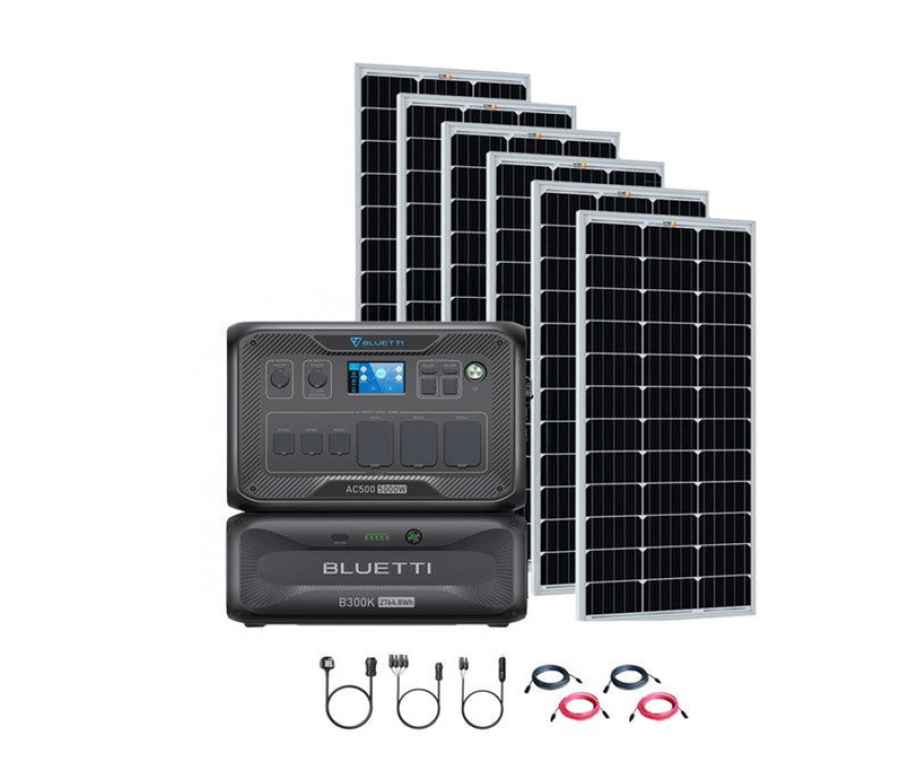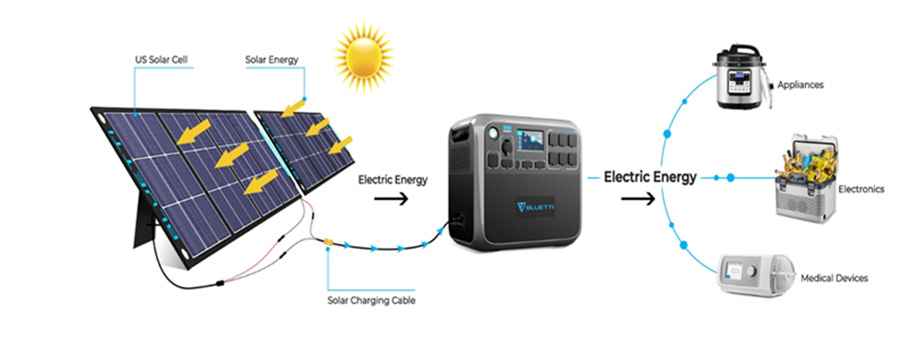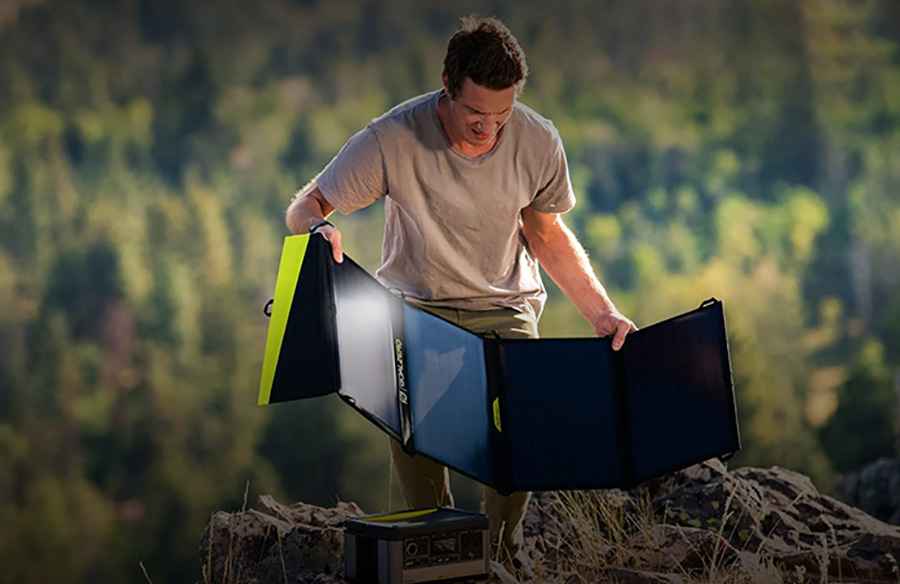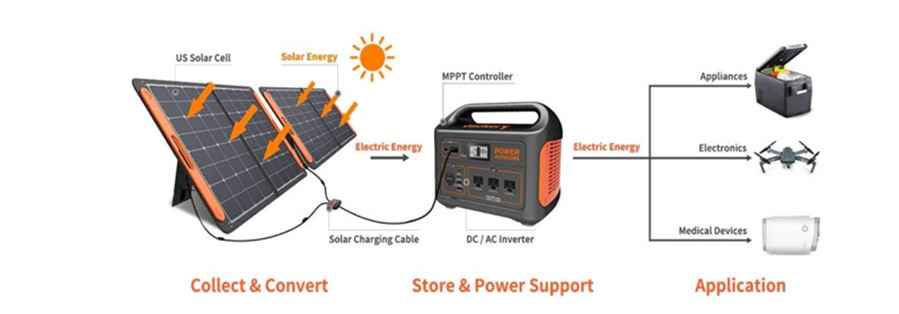Portable Solar Power: Stay Safe on Remote Roads
Remote road travel demands self-reliance and creativity. Consider the conditions on Bolivia’s Death Road, which snakes along a 15,255-foot ridge, or the remoteness of Alaska’s James W. Dalton Highway, a 414-mile gravel haul road where services vanish for 240 miles. On these unforgiving routes, a stalled vehicle or dead battery can quickly become a life-or-death situation.

For travelers on these highways, having a portable solar power system can mean the difference between returning safely and being stranded. In such environments, portable solar power becomes more than a convenience-it can be a critical lifeline. Portable solar kits (compact systems of foldable panels, controllers and batteries) turn sunlight into usable electricity wherever you camp or stop.
Why Portable Solar Power Matters
Traditional generators rely on fuel that won’t be available on Death Road, Dalton Highway or the Canning Stock Route. Portable solar power systems, by contrast, simply use sunlight. The U.S. Department of Energy explains that solar energy technologies capture the sun’s radiation and convert it into electricity. In practice, this means that every day you stop, even just to camp, your panels can refill your battery bank, offering “unlimited power” during daylight. This energy independence is exactly what rugged travelers need.
- Unlimited daytime energy. A properly sized portable solar power system generates power as long as the sun is shining. This replaces the limits of a fixed battery.
- Lightweight and modular. Modern portable solar power kits use folding panels and advanced connectors, making them compact for travel. Many kits include heavy-duty cabling and standard plugs (like Anderson) for easy setup.
- Silent, clean operation. Unlike gas generators, portable solar power systems are quiet and emission-free. They work safely on dusty mountain passes or sandy deserts without requiring fuel or maintenance.
- Vehicle and gadget charging. These portable solar power systems can recharge a vehicle’s battery or multiple devices at once. Phones, GPS units, and 12V fridges can stay powered, ensuring safety and comfort even in the backcountry.
Components of a Portable Solar Power System

A portable solar power kit has several key parts:
- Foldable Solar Panels: High-efficiency monocrystalline cells laminated in durable waterproof blankets (often ETFE). Modern foldable panels can deliver 200+ watts while weighing only a dozen pounds.
- Charge Controller: Regulates power from the panels to the battery. MPPT (Maximum Power Point Tracking) controllers adjust voltage/current for maximum harvest, yielding about 10–30% more power than older PWM controllers.
- Battery: Stores energy for use when the sun goes down. Many overlanders choose Lithium Iron Phosphate (LiFePO4) batteries for their high cycle life and light weight. The solar panels recharge this battery bank each day.
- Inverter (optional): Converts DC power to AC for standard outlets (useful for laptops, kitchen appliances, etc.). Inverters add weight and incur a small efficiency loss, so they are optional in lightweight kits.
- Cabling and Connectors: High-quality wires (often 5 mm² or thicker) and sturdy plugs minimize voltage drop. Good kits include these to ensure your portable solar power system works efficiently.
Choosing the Right Portable Solar Power Kit
For remote overland treks, portable solar power kits are invaluable. Kit selection depends on needs. Aim for 100–200 watts of panel capacity to power devices and accessories reliably. Consider foldable monocrystalline panels with waterproof and shock-resistant construction for durability. MPPT charge controllers are worth the extra cost for higher efficiency.
Brands like Goal Zero, Renogy and EcoFlow offer proven solutions. In fact, Eco Solar Kits provides an entire Portable Solar Systems collection of rugged foldable portable solar power systems built for overlanding. These kits bundle panels, MPPT controllers and battery packs in convenient packs. Reviewing real products helps ensure you get a complete portable solar power system ready for the trail.
Staying Powered on Dangerous Roads

With solar power available, unexpected breakdowns become less dire. For instance, if your car battery dies on Death Road, you can jump-start it from your solar-charged reserve. On the Dalton Highway, a solar-charged battery can run a small heater or charge a satellite communicator during 82°F below zero nights. In the Canning Stock Route, solar panels can keep a 12V fridge running to preserve food and water in the heat.
Perhaps most critically, communication stays live. A satellite phone or GPS beacon is useless if its battery dies; portable solar kits ensure radios, GPS and emergency locator beacons remain powered, even when cell towers are nowhere in range. Lighting up a campsite after dark or running a fan on a hot day also becomes easy and fuel-free.
Conclusion
On truly remote roads, portable solar power isn’t a luxury; it’s a lifeline. By harnessing daylight with portable solar panel systems and kits, adventurers gain energy independence far from civilization. In short, wherever roads are dangerous and help is far, let the sun be your ally-keep your battery full with solar, and travel those roads with confidence. Embrace portable solar power now: no road should leave you powerless.
